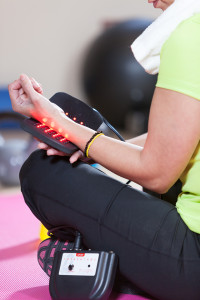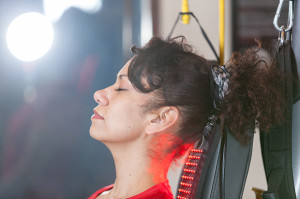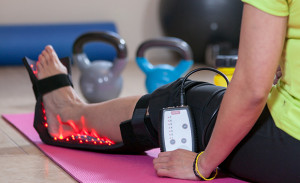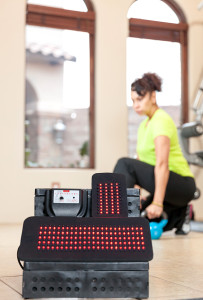 Whether a weekend warrior, an avid exercise enthusiast, or an elite athlete, exercise has the same physiologic mechanisms and effects. “Exercise” is essentially an activity intended to move muscles, which ultimately consumes nutrients and generates force and heat. The act of “exercise” builds and/or breaks down muscle in the body depending upon the availability of nutrients. Nutrient distribution in the body is a function of circulation.
Whether a weekend warrior, an avid exercise enthusiast, or an elite athlete, exercise has the same physiologic mechanisms and effects. “Exercise” is essentially an activity intended to move muscles, which ultimately consumes nutrients and generates force and heat. The act of “exercise” builds and/or breaks down muscle in the body depending upon the availability of nutrients. Nutrient distribution in the body is a function of circulation.
Warming Up
 Weekend warriors have different needs for endurance and exercise performance than professional athletes. Elite athletes must optimize their exercise activities to ultimately perfect the sport. Both types of “athletes” know the value of “warming up” before engaging the rigors of their sport. Warmed muscles perform better and are more resistant to physical damage. According to dos Santos Maciel et al, the application of light near infrared light (830 nm) caused “increased muscle torque at the beginning of the exercise and maintained lactate levels after resistance exercise.”
Weekend warriors have different needs for endurance and exercise performance than professional athletes. Elite athletes must optimize their exercise activities to ultimately perfect the sport. Both types of “athletes” know the value of “warming up” before engaging the rigors of their sport. Warmed muscles perform better and are more resistant to physical damage. According to dos Santos Maciel et al, the application of light near infrared light (830 nm) caused “increased muscle torque at the beginning of the exercise and maintained lactate levels after resistance exercise.”
Fatigue
 One of the common sensations of exercise is “fatigue”. Fatigue is a biochemical response to the metabolites and heat created by exercise. Endurance is measured by the onset of fatigue. Fatigue commonly interferes with optimal performance. The question researchers pose surrounds efforts to disburse the metabolites and heat that cause fatigue via increased circulation, thus post-pone the effects of exercise-induced fatigue. To this end Vieria et al concluded: “…an endurance training program combined with LLLT (808nm) leads to a greater reduction in fatigue than an endurance training program without LLLT. This is relevant to everyone involved in sport and rehabilitation.” (Vieria et al, 2012)
One of the common sensations of exercise is “fatigue”. Fatigue is a biochemical response to the metabolites and heat created by exercise. Endurance is measured by the onset of fatigue. Fatigue commonly interferes with optimal performance. The question researchers pose surrounds efforts to disburse the metabolites and heat that cause fatigue via increased circulation, thus post-pone the effects of exercise-induced fatigue. To this end Vieria et al concluded: “…an endurance training program combined with LLLT (808nm) leads to a greater reduction in fatigue than an endurance training program without LLLT. This is relevant to everyone involved in sport and rehabilitation.” (Vieria et al, 2012)
Recovery
Recovery time is also a function of exercise. In 2009, Leal et al measured changes in blood lactate levels and creatine kinase (CK) levels before and after exercise. The application of LLLT (830nm) resulted in a reduction in the post-exercise CK levels and acceleration in post-exercise lactate removal, which contributes to an accelerated post-exercise recovery. (Leal et al, 2009)
Reduction of CK levels and acceleration in post-exercise lactate removal should allow athletes to resume their workout quicker, work out harder and longer, or possibly get back on the field less fatigued.
Injury
 Recovery from injury is also an important function of exercise. Light therapy has been shown to support the innate healing processes of the body precisely because of its ability to increase circulation and thereby the delivery of needed nutrients to damaged tissues. Assis et al conclude: “… LLLT could be an effective therapeutic approach to modulate oxidative and nutritive stress and to reduce inflammation in injured muscle.” (Assis et al, 2012) Rodriques et al. found that LLLT (660 nm) resulted in the acceleration of the muscle-regeneration process. Research clearly suggests light therapy could be utilized in rehabilitation to improve muscle performance in elite athletes. (dos Santos Maciel T et all, 2014)
Recovery from injury is also an important function of exercise. Light therapy has been shown to support the innate healing processes of the body precisely because of its ability to increase circulation and thereby the delivery of needed nutrients to damaged tissues. Assis et al conclude: “… LLLT could be an effective therapeutic approach to modulate oxidative and nutritive stress and to reduce inflammation in injured muscle.” (Assis et al, 2012) Rodriques et al. found that LLLT (660 nm) resulted in the acceleration of the muscle-regeneration process. Research clearly suggests light therapy could be utilized in rehabilitation to improve muscle performance in elite athletes. (dos Santos Maciel T et all, 2014)
Research
 The aforementioned researchers used a single-point NIR device measuring between 780nm and 830nm. Leal et al were curious about the effects a “cluster of light emitting diodes” would have on muscle performance, fatigue development and biochemical markers for muscle recovery. They used a system with 69 diodes of wavelengths 660nm and 850nm and an irradiation time of 30 seconds. They concluded the light emitting diode therapy did cause a slight delay in skeletal muscle fatigue, decreases in post-exercise blood lactate levels, creatine kinase (CK), and C-reactive protein. (Leal et al, 2009)
The aforementioned researchers used a single-point NIR device measuring between 780nm and 830nm. Leal et al were curious about the effects a “cluster of light emitting diodes” would have on muscle performance, fatigue development and biochemical markers for muscle recovery. They used a system with 69 diodes of wavelengths 660nm and 850nm and an irradiation time of 30 seconds. They concluded the light emitting diode therapy did cause a slight delay in skeletal muscle fatigue, decreases in post-exercise blood lactate levels, creatine kinase (CK), and C-reactive protein. (Leal et al, 2009)
A review of the research reveals “phototherapy administered to skeletal muscle immediately before resistance exercise can enhance contractile function, prevent exercise-induced cell damage, and improve post-exercise recovery of strength and function.” (Borsa et al, 2013)
What are ILWS devices FDA cleared for?
In Light Wellness Systems polychromatic light therapy devices are cleared for increasing circulation and reducing pain.
Light therapy applied BEFORE resistance exercise can:
- Enhance contraction function
- Reduce the fatigue response
- Prevent exercise-induced cell damage
Light therapy applied AFTER resistance exercise can:
- Delay the onset of fatigue
- Improve post exercise recovery of strength and function
REFERENCES:
Assis L1, Moretti AI, Abrahão TB, Cury V, Souza HP, Hamblin MR, Parizotto NA.
Low-level laser therapy (808 nm) reduces inflammatory response and oxidative stress in rat tibialis anterior muscle after cryolesion. Lasers Surg Med. 2012 Nov;44(9):726-35. doi: 10.1002/lsm.22077. Epub 2012 Sep 21.
Borsa PA, Larkin KA, True JM.Does phototherapy enhance skeletal muscle contractile function and postexercise recovery? A systematic review. J Athl Train. 2013 Jan-Feb;48(1):57-67. doi: 10.4085/1062-6050-48.1.12.
dos Santos Maciel T1, Muñoz IS, Nicolau RA, Nogueira DV, Hauck LA, Osório RA, de Paula Júnior AR. Phototherapy effect on the muscular activity of regular physical activity practitioners. Lasers Med Sci. 2014 May;29(3):1145-52. doi: 10.1007/s10103-013-1481-4. Epub 2013 Nov 28.
Leal Junior EC1, Lopes-Martins RA, Baroni BM, De Marchi T, Taufer D, Manfro DS, Rech M, Danna V, Grosselli D, Generosi RA, Marcos RL, Ramos L, Bjordal JM. Effect of 830 nm low-level laser therapy applied before high-intensity exercises on skeletal muscle recovery in athletes. Lasers Med Sci. 2009 Nov;24(6):857-63. doi: 10.1007/s10103-008-0633-4. Epub 2008 Dec 5.
Leal Junior EC1, Lopes-Martins RA, Rossi RP, De Marchi T, Baroni BM, de Godoi V, Marcos RL, Ramos L, Bjordal JM. Effect of cluster multi-diode light emitting diode therapy (LEDT) on exercise-induced skeletal muscle fatigue and skeletal muscle recovery in humans. Lasers Surg Med. 2009 Oct;41(8):572-7. doi: 10.1002/lsm.20810.
Rodrigues NC1, Assis L, Fernandes KR, Magri A, Ribeiro DA, Brunelli R, Abreu DC, Renno AC. Effects of 660 nm low-level laser therapy on muscle healing process after cryolesion. J Rehabil Res Dev. 2013;50(7):985-96. doi: 10.1682/JRRD.2012.08.0147.
Vieira WH1, Ferraresi C, Perez SE, Baldissera V, Parizotto NA. Effects of low-level laser therapy (808 nm) on isokinetic muscle performance of young women submitted to endurance training: a randomized controlled clinical trial. Lasers Med Sci. 2012 Mar;27(2):497-504. doi: 10.1007/s10103-011-0984-0. Epub 2011 Aug 26.
